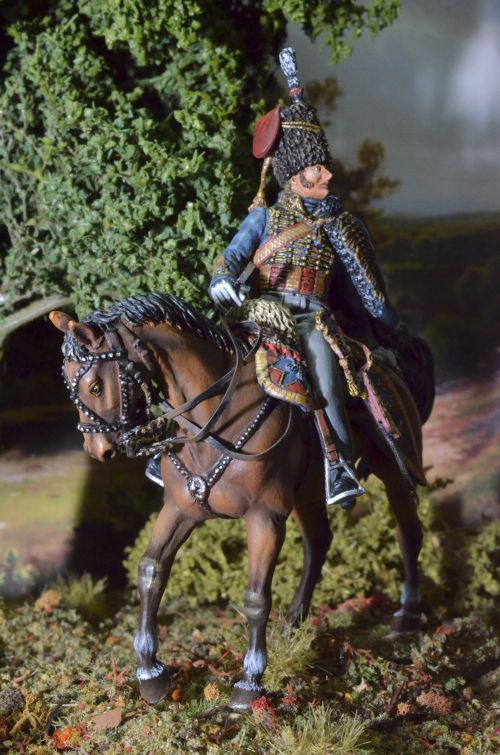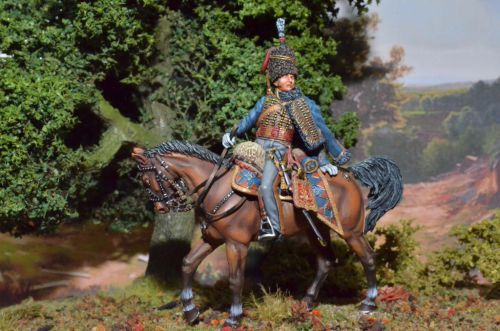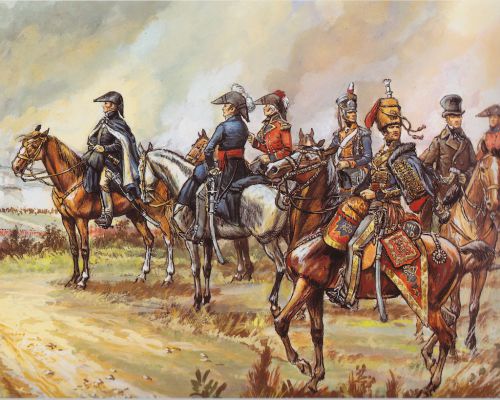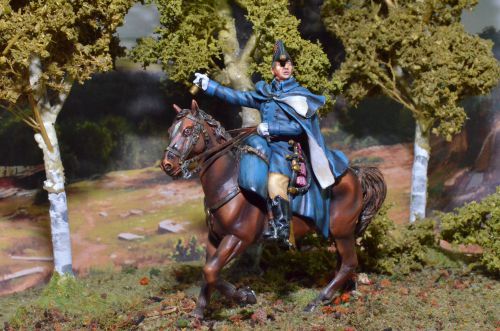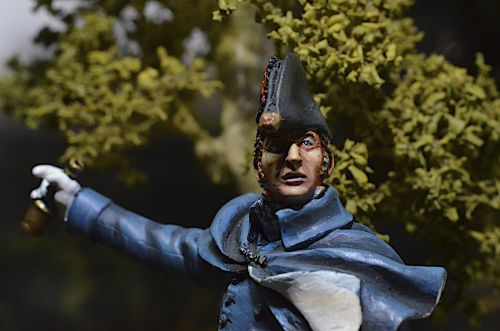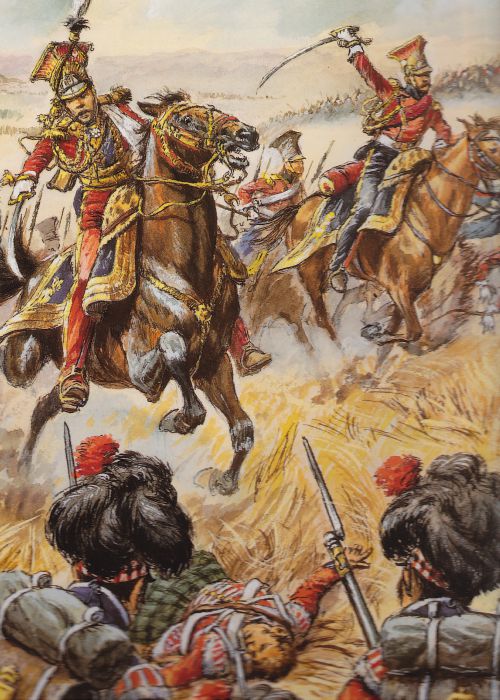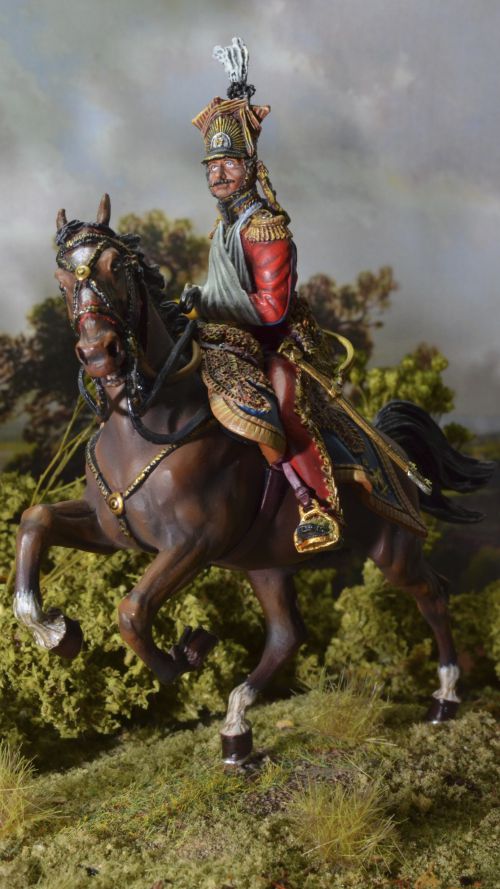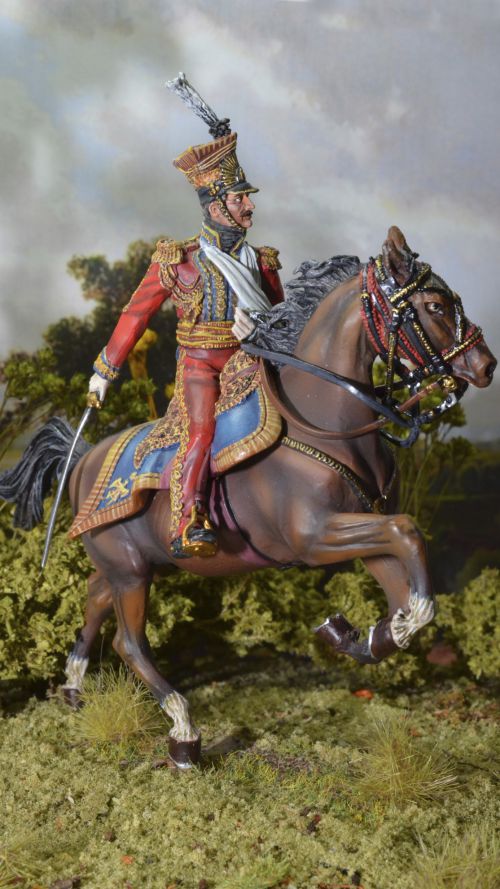Les personnalités napoléoniennes - Napoleonic's personalities - updated September 12th
Voici une nouvelle rubrique consacrée au personnalités napoléonniennes.
3- Lord Uxbridge (First Legion NAP174)
Henry William Paget , 2e comte d’Uxbridge, 1er marquis d’Anglesey, plus généralement connu sous le nom de Lord Uxbridge, est un officier britannique qui assura le commandement de la cavalerie alliée lors de la bataille de Waterloo, le 18 Juin 1815. Touché à la jambre droite en fin d'après-midi par un éclat, les chirurgiens durent procéder à l'amputation du membre touché.
Lord Uxbridge, désormais unijambiste, et que l’on surnomma dans la troupe « One-Leg », resta au service de Sa Majesté Britannique et fut promu chevalier de l'Ordre de la Jarretière en 1818. en 1828, il se vit offrir la charge de Lord lieutenant d'Irlande.
Henry William Paget, 2nd Earl of Uxbridge was commander of some 13,000 Allied cavalry and 44 guns of horse artillery at the Battle of Waterloo. At about 2:30 pm, at a critical stage in the battle, he led a charge of the 2,000 heavy cavalry of the Household Brigade and the Union Brigade to throw back the columns of d'Erlon's French I Corps, who were threatening to push back Picton's severely outnumbered 5th Division, with some 15,000 French infantry advancing on 3,000 British. The charge succeeded in sweeping the French infantry away in disorder, but Uxbridge was unable to rally his troops, who ran on in pursuit and were cut up by counter-attacking French cavalry. Uxbridge spent the rest of the battle leading a series of charges by British light cavalry formations, and had eight or nine horses shot from under him.
One of the last cannon shots fired on 18 June 1815 hit his right leg, necessitating its amputation above the knee.
2- Le Duc de Wellington (First Legion NAP0237)
Arthur Wesley, plus tard Wellesley, est né en Irlande le 1er mai 1769.
Il est le sixième enfant du comte de Wesley, Pair d'Irlande, et sa famille le destine à la carrière des armes.
Il commence sa carrière militaire par la campagne de Hollande, en 1794, contre les républicains français.
Il est alors lieutenant au 33ème d'infanterie. Colonel en 1797, son régiment est envoyé aux Indes et il n'en reviendra qu'en 1805 avec le grade de major général.
Lieutenant Général, il commande les troupes au Portugal en 1808 et bat l'armée de Junot à la bataille de Vimeiro, au nord de Lisbonne.
Après sa victoire de Talavera (28 juillet 1809), il reçoit le titre de vicomte Wellington de Talavera et de baron Douro de Welleslie.
Ce n'est qu'en mai 1814, après l'abdication de Napoléon, qu'il recevra le titre de duc de Wellington.
Représentant de la Grande-Bretagne au Congrès de Vienne, vainqueur à Waterloo, général en chef des troupes d'occupation européennes en France, Wellington quittera la carrière militaire en 1818 et se consacrera à la politique de son pays où il exercera plusieurs fois au de premier ministre Il s'éteindra à Walmer, près de Douvres, le 14 septembre 1852.
Arthur Wesley, later Wellesley, was born in Ireland on 1 May 1769. He was the sixth child of the Earl of Wesley, Pair of Ireland, and his family intends it to a military career.
He began his military career by the campaign in Holland in 1794 against the French republicans. It is then a lieutenant in the 33rd Infantry. Colonel in 1797, his regiment was sent to India and it will be up until 1805 with the rank of major general.
Lieutenant General, he commanded troops in Portugal in 1808 and defeated Junot's army at the Battle of Vimeiro, north of Lisbon.
After his victory at Talavera (July 28, 1809), he received the title of Viscount Wellington of Talavera and Baron Douro of Welleslie.
It was not until May 1814, so after the abdication of Napoleon, he will receive the title of Duke of Wellington. The General has never known defeat.
Representative of Great Britain at the Congress of Vienna, winner at Waterloo, commanding officer of the European occupation troops in France, Wellington will leave military career in 1818 and will focus on the politics of his country several times as prime minister. He passed away at Walmer, near Dover, September 14th, 1852.
Here is an illustration of Jack Girbal from the book "Soldiers and uniforms of the First Empire" that shows Wellington and his staff at Waterloo.
1 - Edouard de Colbert (First Legion NAP0167)
Edouard de Colbert est né le 18 octobre 1774, il est le fils du comte de Colbert Chabannais.
Tout d'abord soldat de la République après la révolution, il va s'illustrer dans les armées de Napoléon.
- en 1802, il est capitaine des Mamelucks de la garde consulaire,
- en 1806, il est commandant du 7ème régimment de Hussards ou il s'illustre à Wagram sous les ordres du général Lasalle,
- en 1809, alors baron d'Empire, il nommé général de brigade et prend le commandement des 7ème, 20ème chasseurs et 9ème hussards
- En 1811 est créé le 2ème régiment de Lanciers de la Garde à partir des hussards de la garde hollandaise
dont le commandement est confié à Edouard de Colbert. Le régiment va participer aux campagnes de Russie, de 1813 et de France en 1814.
Durant les Cent jours, de Colbert participera au combat des Quatre Bras le 16 juin 1815 où il sera blessé au bras gauche.
A Waterloo, le 2ème régiment de Lanciers de la Garde est engagé avec les cuirassiers contre les carrés anglais.
Après la défaite de Waterloo, Edouard de Colbert sera emprisonné durant deux mois.
- En 1828, il reprend du service et devient aide de camp du Duc de Nemours en 1832.
- Il meurt en 1853 à l'age de 79 ans.
La figurine d'Edouard de Colbert a été produite par First Legion en 2009, elle est maintenant épuisée.
Elle le reprèsente lors de la charge de Waterloo.
Voici une illustration de Jack Girbal extrait de l'ouvrage "Soldats et uniformes du premier Empire"qui a probablement inspiré First Legion.
Here is a new section devoted to the Napoleonic's personalities.
Edouard de Colbert was born in 1774, the son of the Count of ColbertChabannais.
Soldier of the Republic after the french revolution, he will fight in the armies of Napoleon.
- In 1802, he is appointed as captain of the Mameluks of the Consular Guard,
- In 1806, he is appointed as commander of the 7th Hussars régiment, he distinguished himself under the orders of General Lasalle during the battle of Wagram,
- In 1809, when Baron d'Empire, he is appointed as brigadier general and took command of the 7th,20th chasseurs and 9th Hussards
- In 1811, he is appointed as commander of the second regiment of Lancers of the Guard from the Dutch Hussars of the Guard and deployed during the Russian campaign, then in Germany in 1813 and finally durint the French campaign in 1814.
During the Hundred Days, Colbert will participate in the battle of Quatre Bras 16th June 1815 where he was wounded in the arm.
At Waterloo, the second regiment of Lancers of the Guard is engaged with the cuirassiers against the English squares.
After his defeat at Waterloo, Edouard de Colbert will be imprisoned for two months.
- In 1828, he returned to active service and became flag officer of the Duke of Nemours in 1832.
- He died in 1853 at the age of 79.
The figurine of Edward Colbert was produced by First Legion in 2009, and now out of stock!.
Here is an illustration of Jack Girbal from the book "Soldiers and uniforms of the First Empire" that shows Edouard de Colbert at Waterloo.
A découvrir aussi
- The end is close : Vinkovo - 1812
- SdKfz7 and sFH 18 150mm in action
- Scheiße! - Close to Gumrak airfield - Dec. 1942
Inscrivez-vous au blog
Soyez prévenu par email des prochaines mises à jour
Rejoignez les 25 autres membres

